The Fuji X-T1 on African Safari – How Well Did It Work?
by Dave Burns | Posted in Trip Reports, What's in the Bag |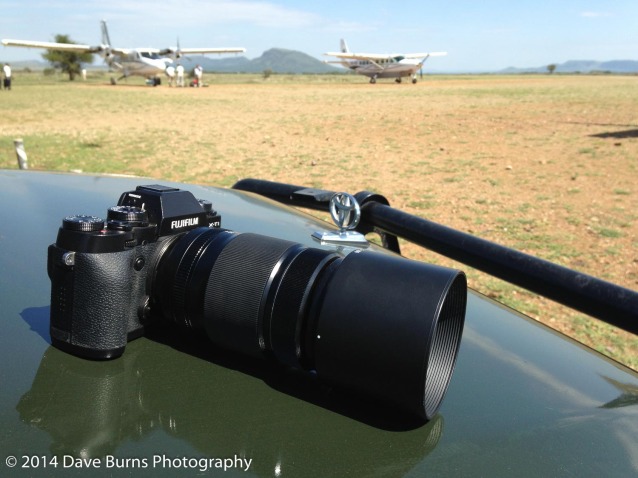
UPDATE 12/15/2014: I’ve caught some grief in online discussion groups for the images in this post and it made me realize I should have been more clear about my intentions. You can find articles everywhere online that show off the best a camera can do. The images here are not those. My goal was to illustrate challenges the X-T1 has and where Fuji needs to improve the X Series features if they want to better serve certain markets (sports, wildlife, etc.).
The other goal I had for this post was provide an answer to the question I’ve received more than once from my clients: should they bring their mirrorless camera on one of my safaris? Until now, I’ve had to say, “I don’t know.” With this experience, I can give them a more balanced answer.
In a recent post, I described the kit I took on the most recent photo tour I led to Africa. The kit included the Fuji X-T1 and in this post, I’m going to talk about my impressions of using that X-T1 in the field, how well it performed, and whether I would bring it again. At the end is a gallery of images I made with the X-T1.
When I told some people I was bringing the X-T1 on safari, they shook their heads. While people love their X-T1’s, there’s general consensus that it’s not suitable for sports or wildlife photography – anything with fast action. And for those who follow online forums and Facebook groups and are familiar with the challenges many people face with the X-T1, much of this article will be predictable. That’s probably a good thing: ultimately I just want my systems to be better and if Fuji is already aware of their gear’s good and bad points, that increases the likelihood that they’re already working on improving them. And that’s a good thing because I’m biased: I want this gear to work well since it has many great points and ultimately my goal is to change my kit to use gear that is lighter and smaller than my current gear.
My standard safari kit for several years has included the Canon 5D Mark III and that is my benchmark for the X-T1. I may not need the X-T1 to measure up to the 5D3 in all areas but there are a few areas of functionality that are critical to successful shooting on safari:
- Autofocus performance. Wildlife moves, compositions change second to second, and you need a camera that can keep up with how quickly you think. The 5D3 is almost identical to their 1-series autofocus system and it shows. It acquires focus incredibly fast and is amazingly accurate. When I use it, I’m highly confident that I’ll get a high rate of keepers.
- Responsive controls. For the same reasons you need great AF performance on safari, you need controls that can keep up. Canon’s controls are well-placed, easy to use, and show their years of refinement that allow users to make rapid adjustments.
- Weatherproofing and “ruggedness”. I have no hard data about the 5D3’s repair record but I know many photographers who use it as their day to day workhorse in rough conditions and it’s never failed them. Africa is a dusty place where you can bounce down the road for hours and whatever you bring needs to handle it.
- High quality, long focal length lenses. Canon’s long lenses are legendary. Crisp, and contrasty with fast autofocus. Their price, weight, and size are also legendary.
- High image quality. Although Canon’s latest cameras are lagging the competition when it comes to dynamic range, the 5D3’s resolution and color are excellent and I’ve shown and sold many large prints made from my 5D3.
How does the Fuji X-T1 measure up in those same areas?
Autofocus Performance
Before leaving for Tanzania, I did some research on best practices for configuring the X-T1. The consensus online seems to be to have High Performance mode turned on and to make the focus area/point a little larger than default. My informal tests at home seemed to bear these out but I welcome other opinions.
When it comes to focusing speed, the lenses in the Fuji system vary. The 35mm lens is one of the original lenses and it feels less responsive. Focusing my other lenses felt much more snappy and that’s ok because I’d brought the Fuji as a substitute for my mid-range kit (usually a Canon 5D3 with a 70-200mm lens). Using Fuji’s 55-200mm lens on the X-T1 performed quickly. I never had an issue with focusing speed.
Focusing accuracy is a different issue though. With some basic analysis in Lightroom, I can see my keeper rate for shots with the Fuji is about 2 out of 3. Compare that to the 5D3 where it’s 9 out of 10. A lot of my issues seemed to occur when there is low-light. Although I’ve had scenarios where my 5D3 struggles and seeks, those are rare exceptions. It was always on my mind with the X-T1 which was an unwelcome distraction. And these are subjects that are mostly stationary or very slow moving – no high speed expectations here. For what it’s worth, when the focus is off, it always seems to back-focus.
Take this picture of a lion cub coming through the grass – a classic example of a challenging situation for autofocus:
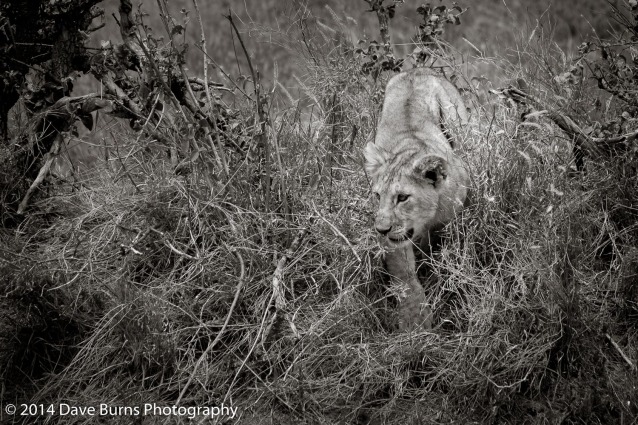
Fuji X-T1 w/ 55-200mm at 140mm, 1/400 at f/6.4, ISO 200
If I’m being picky, it’s just a hair (no pun intended) back-focused but completely acceptable. I’d feel comfortable selling that image as a large print. But the giraffe below is barely moving and yet it’s the branches that are sharp. This should have been an easy shot:
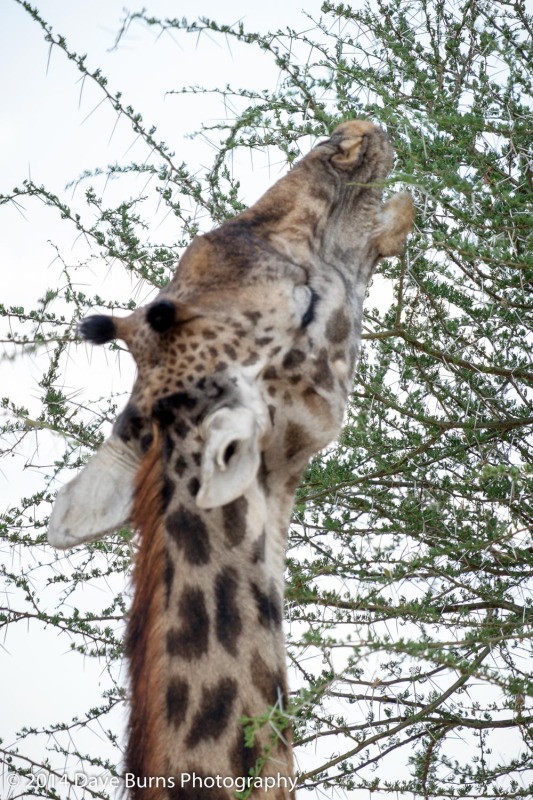
Fuji X-T1 w/ 55-200mm at 200mm, 1/110 at f/4.8, ISO 200
Based on the entire set of images I made, my conclusion is that, while Fuji’s autofocus is fast enough, it is not accurate enough to have my complete trust the way the 5D3 does. I’m sure that solving this problem overlaps a lot with improving the AF system’s low-light sensitivity.
(As a side note, it’s really nice having the autofocus sensors co-located with the imaging sensor. This eliminates the need for calibrating focus with micro-adjustments. With Canon, unless you spend the time to calibrate a specific lens to a specific body, you always wonder if focus issues are caused by limitations of gear or user skill.)
Controls
In general, I can get used to almost any system. It doesn’t matter if a button or dial is located here or there. While Fuji’s controls are very different from Canon’s, I’ve been using them long enough to be proficient with both. That said, there is too much of a disparity between how Canon lets you choose the autofocus point versus Fuji. With the Canon, there is a dedicated joystick for this. Without removing your thumb from the joystick, you can move the point around the viewfinder or press it to reset to center.
Fuji has their D-pad and by now most T1 users know the trick to program all four of the directional buttons to activate the same mode where you can move the point. But you still need to move your thumb between the buttons and you still need that extra button press just to get started. Not to mention that the X-T1’s D-pad buttons are recessed too far and have almost no tactile feedback (a huge regression from the X-E1 and X-E2 in my opinion). For wildlife, I have my thumb on the Canon’s joystick on every shot and I use it to follow the subject around the frame. Simple and intuitive. Fuji needs a better solution here.
Although I love the big, clear optical viewfinder of the 5D3, I’m now sold on recent, high-quality, electronic viewfinders like that in the X-T1 for one main reason: the EVF immediately shows the results of adjusting the exposure compensation dial. With a traditional SLR, the best you can do is chimp your histogram afterwards to see if you guesstimated properly. On safari, this difference counts. A good leopard or lion sighting might be up in a tree under the canopy and you’re shooting against a bright sky. You might need to dial in anywhere from 1 to 2 stops of increased exposure. You don’t have a lot of time to experiment with settings.
Finally, one smaller issue that probably can’t be helped. I’m left-eye dominant and most of the population (about 70-80%) is right-eye dominant. With the Fuji’s smaller body, the buttons on the back are all close and when I’m looking through the viewfinder, my nose is blocking some of the buttons I need to use. This sounds silly, I know, but potentially a real issue for some people.
Weatherproofing/Ruggedness
Fuji markets the X-T1 as being weatherproof. I wondered if it would hold up to safari conditions. I don’t have much to say here as I had no significant issues. The Fuji seems rugged and after two weeks of bouncing down dusty/muddy roads in both dry and humid conditions, there were no signs of wear and tear and all worked well. I change lenses on safari where others do not but did not have any issues with dust on my sensor.
The one issue that I’ll file under “ruggedness” is the flimsy memory card door. It’s way too easy to open. Just picking it up out of my bag on the vehicle floor might slide it open. It would be great if Fuji gave this a positive, clicking lock like Canon has on the 5D3.
Lenses
The news here is no surprise to Fuji fans. Fuji’s lenses are generally excellent and performed well for me. As mentioned above, focusing speed was good. I shot about 750 frames with the X-T1: about 400 with the 55-200, 300 with the 10-24mm, and the rest with the 35mm.
The 55-200mm lens gives about an 80-300mm reach in 35mm equivalence. At it’s best, it’s superlative. My only wish is that it were sharper when wide open. It’s really at its best about two stops down. For example, this ostrich holds up at 100%. You can see the hairs on its head:
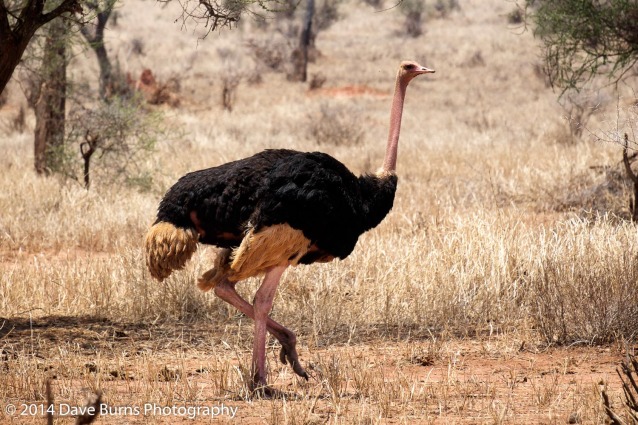
Fuji X-T1 w/ 55-200mm at 200mm, 1/350 at f/7.1, ISO 200
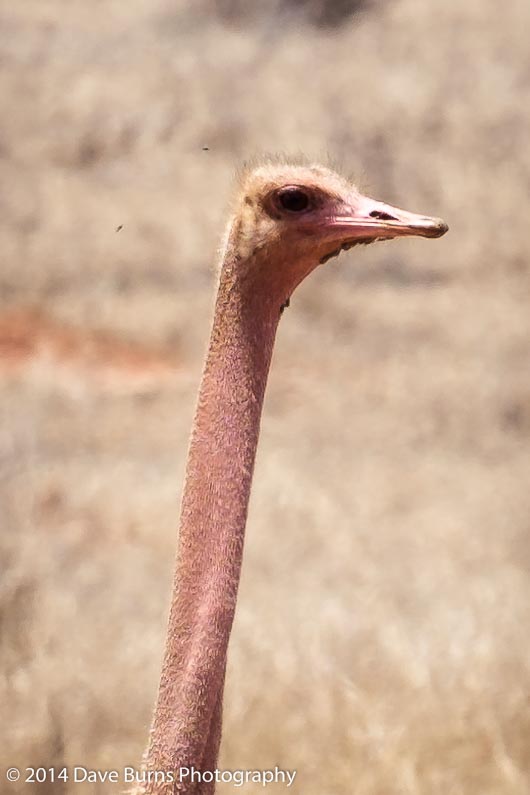
Fuji X-T1 w/ 55-200mm at 200mm, 1/350 at f/7.1, ISO 200
This lion was shot wide open and, even though it is in focus, it is pretty soft. While I like the image very much, I’m not comfortable selling prints of this:
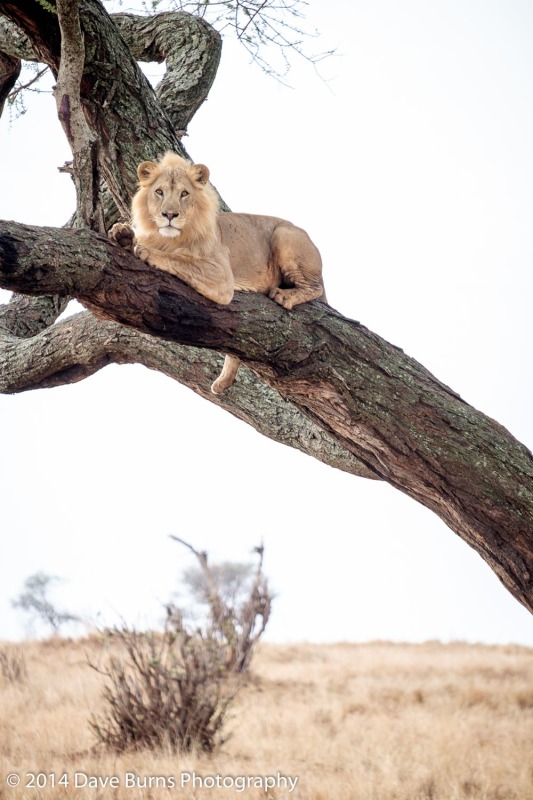
Fuji X-T1 w/ 55-200mm at 200mm, 1/75 at f/4.8, ISO 200
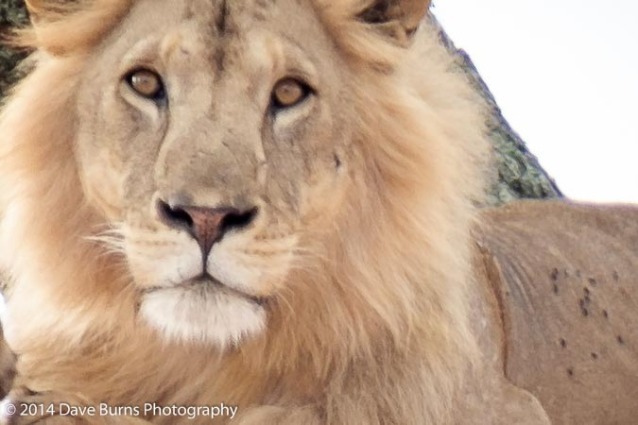
Fuji X-T1 w/ 55-200mm at 200mm, 1/75 at f/4.8, ISO 200
Fuji has recently shown a 150-400mm lens (about a 225-600mm equivalent in 35mm) which seems ideal for safari work. I expect the optical quality will be top notch. It’s unclear how fast it will focus and the lens needs to be sharp wide-open. I look forward to evaluating this lens.
Image Quality
As expected, image quality that I see with the X-T1 is high. The main distinction to make is between acutance and resolution. With the high quality Fuji lenses and the lack of an anti-aliasing filter on the Fuji, acutance is high – in my opinion, equal to the 5D3 and in some cases maybe slightly better. When it comes to absolute detail though, Canon’s 22MP resolution seems to have an edge over the Fuji’s 16MP, even with Fuji’s lack of AA filter.
For comparison, here is a shot of a Lilac-breasted Roller taken with both cameras. Both are tack sharp but the Canon shows more detail in the feathers:
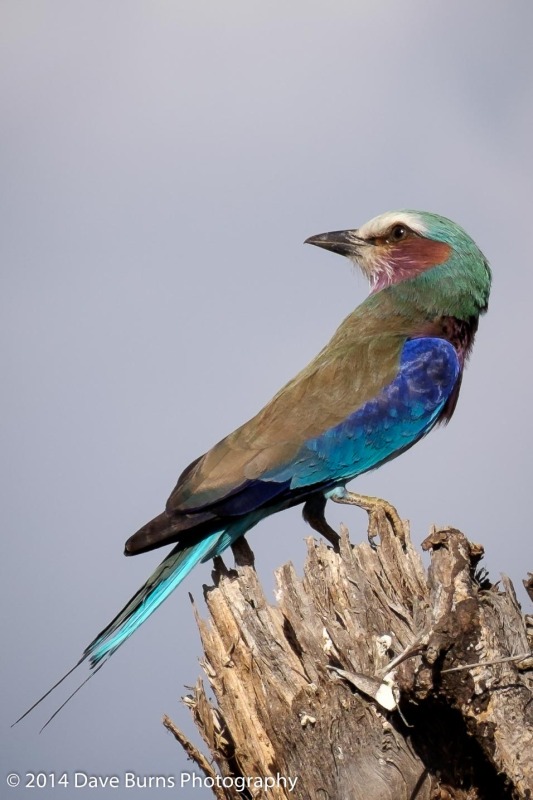
Fuji X-T1 w/ 55-200mm at 200mm, 1/350 at f/10, ISO 200
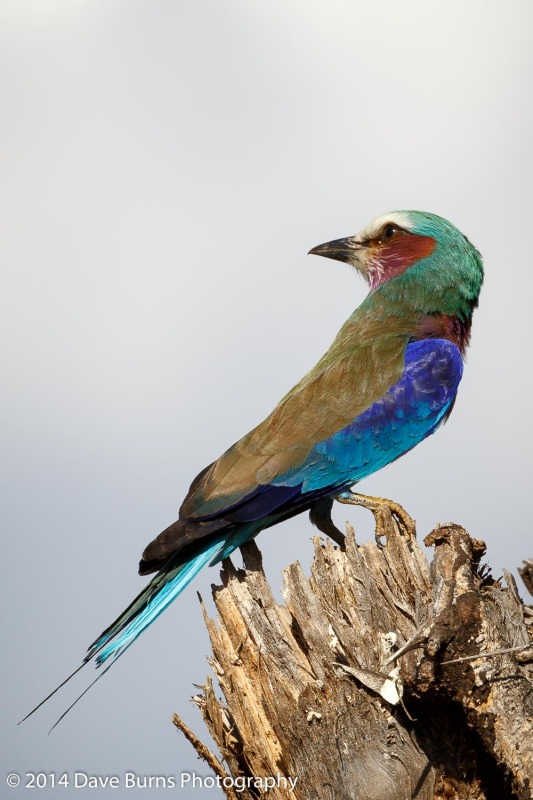
Canon 5D3 w/ 200-400 at 400mm, 1/640 at f/8, ISO 100
To be fair, this is not a rigorous comparison because the Canon lens is 400mm where the Fuji is at a 300mm equivalent. The Canon can get closer and should show more detail because I had to crop it less to get the matching frames above. But the good news is that even with this “handicap,” the Fuji has excellent results for a lens that costs $700 compared to the Canon’s $11,800.
Overall, I still want the Fuji to have more pixels though. Matching or beating the 5D3’s 22MP while maintaining the current low noise levels would be ideal for me when I sell large prints (the smallest print I sell is usually a 12×18 inch). It’s also still true that Fuji files sometimes have that odd, painterly rendition of some fine textures. It’s frustratingly unpredictable but usually shows up in grass and other common safari backgrounds.
Misc. & Oddities
In no particular order:
- Fuji’s batteries don’t last as long as I’d like but I understand why: the point here is a small and light camera body. For safari, just bring several batteries. To be fair, I could/should use the accessory vertical grip although that defeats some of the point of trying to bring a smaller camera.
- Shooting in continuous mode has a strange pause after finishing the burst. Why? The camera says it is “saving.” I know that. You’re doing that when I shoot in single mode so why tell me here?
- Why are Fuji’s RAF raw files so large for a 16MP camera? RAFs are typically 33MB and converting them to DNG in Lightroom results in about a 23MB file – about 33% smaller. Canon CR2s usually reduce only 10% smaller when converted to DNG.
So after all that, would I take the X-T1 again?
I’ll divide that into two questions:
Would I take the X-T1 again as part of a kit that also has my Canon gear?
Probably. But if Fuji’s offering stays the same, it’d be in the same backup role rather than as a primary camera.
What would need to change for me to take an exclusively Fuji kit on safari?
Although I mentioned several things above, two things must change for this:
- Fuji needs to offer a high quality, longer lens. I hope I can evaluate the 150-400mm on safari in 2015.
- Fuji needs to offer better autofocus performance AND controls.
And one thing should change but probably wouldn’t be a deal-breaker: I’d like more, high-quality pixels.
Anything I missed? Feel free to ask me in the comments. Below is a gallery of a few images, all taken with the X-T1 on this safari.
— Dave
About Dave Burns
Dave Burns is a wildlife, travel, and landscape photographer whose passions range from the beauty of the African savanna to the streets of Paris. He created Dave Burns Photo Tours to share his favorite places with other photographers, help them capture unique images, and learn more about photography and digital work flow. His next trip is an African photo safari to the Serengeti in February 2021. Dave’s images are in private collections and galleries. To contact him, use the contact page on this site.
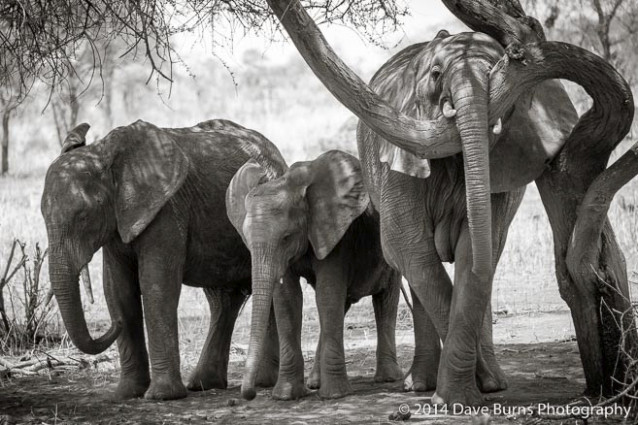

Great article!
Pingback: The Fuji X-T1 on African Safari - How Well Did ...
Pingback: The Fuji X-T1 on African Safari - How Well Did ...
The blow-up of the lion in the tree shows motion blur … not the len’s fault. I’d rather use a higher ISO and get a bit of noise then motion blur. But overall … nice. I would hope the lighter kit made it worth it.
Makofoto –
I still believe it’s not motion blur but I understand the example I chose to show it is not the best. I’ll look for a better one of that lion and put it in a follow-up post.
The kit was still heavy with all the Canon gear in there but the Fuji line shows a lot of promise. Someday I’ll go on safari with a 10 pound kit.
— Dave
Pingback: The Fuji X-T1 on African Safari - How Well Did ...
Pingback: The Fuji X-T1 on African Safari - How Well Did ...
Pingback: The Fuji X-T1 on African Safari – How Well Did It Work? | Dave Burns › Von TOMEN
Hey Dave, very nice article. Particularly interesting to me because I have just started using the Olympus OMD EM1 and I am asking some of the same questions and trying to find the answers, coming from a Nikon kit. I am waiting for the Olympus 300 f4 to arrive, which would give a 600mm focal range. Otherwise their fast prime lenses and the 12-40 (24-70) are great.
I look forward to following your blog and site. I do photo tours in France and am just setting up my site.
Kindly
Steinar Knai
It turns out that the RAF files are 100% uncompressed; they’re not just 30M, they’re all exactly the same number of bytes. Like you, I convert to DNG – for Lightroom Users, it’s worth pointing out that this is an Import option, it’ll convert from RAF to DNG on the fly (which slows down import, sigh); the space savings are considerable.
Ah, thanks for pointing that out, Tim. I saw that they were different but didn’t realize they weren’t that different – plus or minus only a few hundred bytes which is probably just attributable to metadata.
It’s a shame Fuji doesn’t compress the image data. I wonder what’s behind it.
Tim, thanks for this answer. I’ve often wondered this as well. I’m going to try DNG conversion not only to save HD space, but also to see if converting at import speeds workflow as well.
The lion shot at 1/75 and 200mm is much more likely to be motion blur and the image indicates the same.
I agree with the back focus, that is really maddening, even with very obvious easy shots it gets it wrong. Drives me crazy so I hope that improves.
The term “back-focus” can be misleading since it is frequently used to describe a misaligned auto-focus system on a DSLR, which, as you mentioned, can be micro-adjusted on most nicer cameras in order to correct.
In your case it seems your camera is locking on to an unintended target but is correctly focusing on that target.
It’s my understanding with the X series cameras that the larger the focus box the faster it focuses but the *less* accurate it becomes. The camera can more easily (and inadvertently) pick out a small, contrasty element that barely lies within the box and lock onto it instead of your intended target which may fill the majority of the box.
Unfortunately in order to achieve more accurate focusing you’ll need to reduce the size of the focus box allowing for more precise targeting of your desired subject–the downside being that it can noticeably slow down auto-focus.
With regards to soft images it could simply be that the mass of a larger camera/lens is less inclined to movement while shooting. In the vast majority of my images that appear soft it’s either camera movement, high ISO, or slightly missed focus. I’ve also seen it once or twice when I forgot to disable image stabilization when mounting the 55-200 on a tripod.
I enjoyed your write-up and I’d love to see Fuji come out with some longer lenses but until their auto-focus speed improves significantly I wouldn’t trust one as my main camera in a situation such as you’ve described. I think a good DSLR still holds a significant advantage in these cases although that advantage continues to diminish.
Interesting comments, Jerry. I’m usually pretty particular about precise terminology so I appreciate your comments about “back-focus.” I’ll have to experiment more than I had with the size of the focus point.
Your comment about the mass of the camera rings true although the camera was usually resting on a beanbag when shooting from the vehicle. What’s not clear to me is if Fuji’s stabilization tech has a problem with that – I understand that more recent vintages of Canon’s do not.
Compare canon with nikon. Not fuji
http://www.google.com.ph/imgres?imgurl=http%3A%2F%2Fwww.misterian.com%2Fblog%2Fimages%2F2009%2F06%2Fbig-lens.jpg&imgrefurl=http%3A%2F%2Fwww.dpreview.com%2Fforums%2Fpost%2F35229035&h=500&w=321&tbnid=JdCrT6V_O3kRmM%3A&zoom=1&docid=Yeh4-XjpWJw4ZM&ei=snhzVO62EuTHmAW8tIKwAw&tbm=isch&client=ms-android-samsung&ved=0CB0QMygCMAI&iact=rc&uact=3&page=1&start=0&ndsp=10
Many thanks for your analysis, as I will be going to Serengeti etc in February, bringing an X-T1 with lenses as my main camera (having left Canon and the 7D).
Question: What is your opinion regarding exposure reliability? I am expecting to use exp bracketing as my standard mode, although I think it is slow and makes an unpleasant rasping sound.
Hi, Johan. My take on Fuji’s exposure reliability is that it is excellent (this goes for its white balance too). Probably better than Canon’s which I’m familiar with. Remember two tips: 1) like I said in the blog post, having an EVF instead of an optical finder here is a godsend because you can see the effects immediately of any exposure compensation you do – both visually and in the live histogram. And 2) keep in mind that the histogram, like all digital cameras I know of, is derived from the JPG data, not the RAW data, so it is a bit too conservative on the highlight end. In other words, you can probably run your histogram to look just a little bit overexposed but the RAW will actually not be. Having said that, experiment before you go so you don’t miss any great shots by my advice.
Not there quite yet is my take on your most excellent review. I too am vested in Canon with 7Dii, 5Diii, 6D, 70D, etc., and as I age I look more and more at lighter weight systems. I’m also vested in the Sony e-mount platform with A7r, A7s, A6000. Sony and Fuji have the same focal length challenge that can only be addressed with a DSLR…hopefully only for now and not for long.
I was hoping Fuji via the x-t1 would have come closer to the 5Diii though I didn’t have high hopes it would equal it. I think in the next generation it will be close enough to outweigh the weight suffered in toting a Canon centered kit and by then the rumored 140-400mm will be a reality and again with fingers crossed pass the IQ and focus speed test, though the 600mm 35mm equivalent was not necessary when I safaried in the Kruger several months ago–rarely did I ever wish for anything greater than 300mm and the Canon 2.8 did fine. I did carry an A6000 with 70-200G for anything that might (and often did) pop up close to the Rover.
So here’s me waiting on the X-T2 with improvements and the 120-400 (for a 600mm BIF machine) in the near future.
Hi, Robert.
Yes, the short version is that, for this type of shooting, things are close but we’re not there yet. And to be fair to Fuji, that’s not what the X-T1 was designed for. I’ve wondered whether Fuji even wants to address that market but announcing the 150-400mm makes me think they’re curious if they can. Seeing the X-T1’s successor will tell us what direction they’re heading. Given that the most common complaint I hear about all of the Fuji X cameras is the autofocus system, I hope they make substantial improvements.
And you’re right about not needing a longer lens for southern African countries. Usually you can get closer to wildlife there. East African countries can limit off-road driving so most shooters prefer lenses with more reach. Once Fuji releases the longer lens and an X model with improved AF, I’ll take them to Africa and follow up on this experiment.
As someone who has gone from a 5D3 to an X-T1, this review feels spot on. The AF and the controls of the Fuji are lacking compared to the 5D3. To some extent, this is a “duh” observation but it’s a pretty big difference. I can live with the latter but I sure struggle with the former. This whole business of having to choose between a giant AF point to get any kind of speed and a smaller point for accuracy is a lose-lose choice. And who looked at the flimsy doors on the sides of the X-T1 body and said, “Yes, let’s go with that”? Seriously.
I’m now fully committed to Fuji and overall it is a great system. The glass is beautiful. (I haven’t noticed the extreme softness you mentioned with the 55-200 wide open.) The IQ is generally excellent. And the EVF is awesome. But sometimes I find myself wondering if the folks at Fuji ever pick up a competitor’s camera with the idea of discovering things they could do better. I never felt that way about Canon. Every thing always made sense and if a feature was missing it was only because Canon was trying to force me into a more expensive version of the product. Not so with Fuji.
Thanks, Tim. I agree with you on all points about how the X-T1 should be. I have a feeling that the reality on Fuji’s product management is more pragmatic than you say though: they have limited time and money and need to choose which areas of their product to refine. Just like any other product company. Will they improve their AF? There’s so much feedback around the web that I have no doubt they will. Will it ever be as good as Canon’s best though? Only if the market wants that more than it wants more/better pixels, more/better glass, etc.
Fuji needs to decide whether they want to compete in that market. I think Fuji’s successor to the X-T1 will show us where they plan to take things. The next year or two will be very interesting to watch.
– Dave